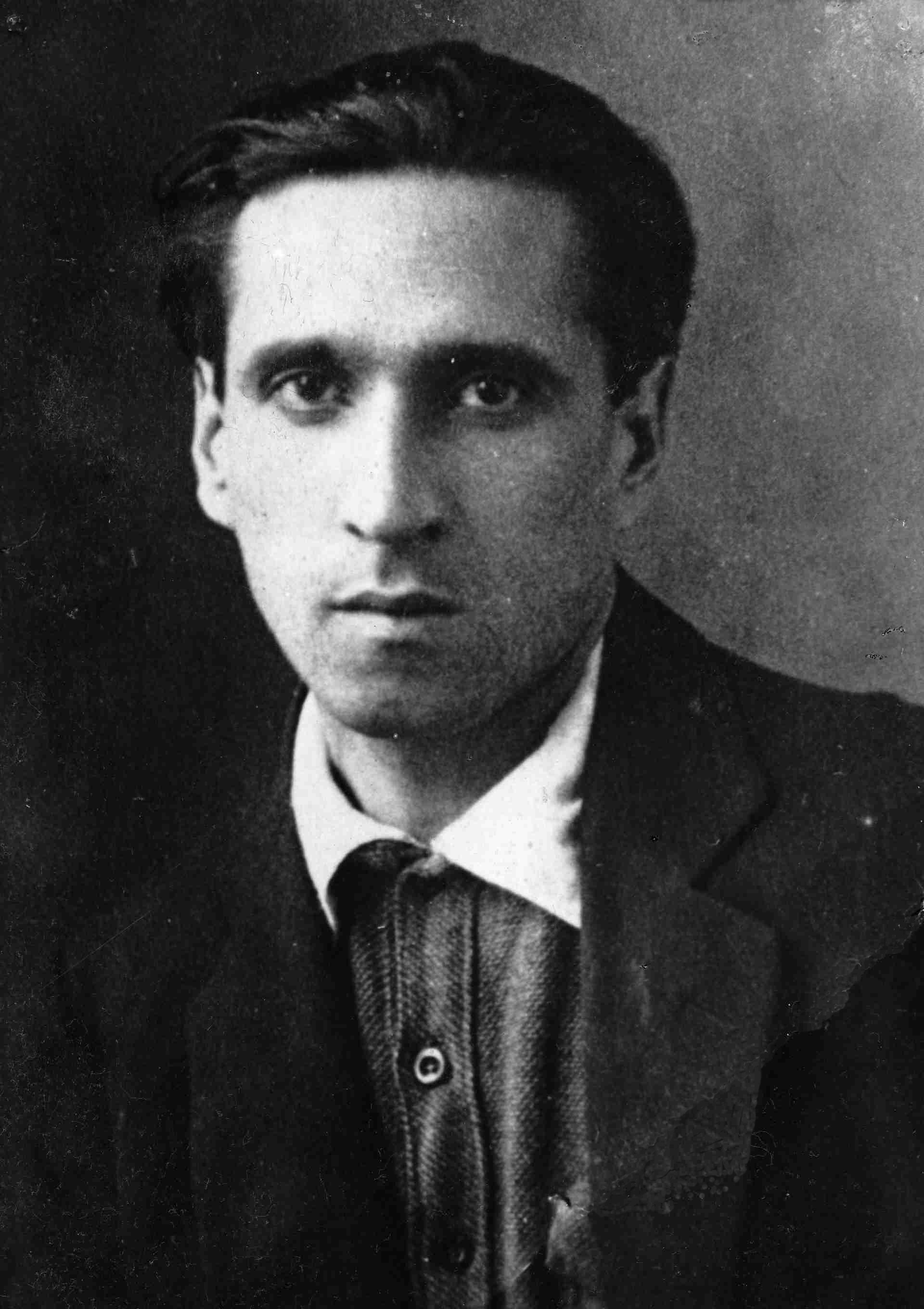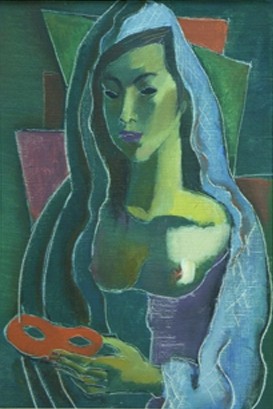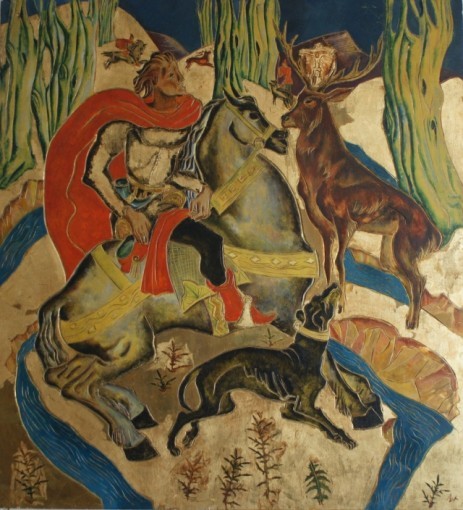Archive
Georges Artemoff
- Georges
- Artemoff
Георгий Калистратович Артемов
- 17-02-1892
- Uryupinsk (RU)
- 09-07-1965
- Revel (FR)
- PainterSculptor
It is difficult to say to what extent Istanbul was a fateful impact on Artemoff in terms of his artwork, but there he met his future wife, artist Lydia Nikanorova.
Word Count: 30

Georges Artemoff in Moscow, 1910 (Private Archive of Marie Artemoff-Testa). 
Georges Artemoff in Moscow, 1910 (Private Archive of Marie Artemoff-Testa). 
Anatolian Hills by Georges Artemoff. Most likely created in the Ottoman Empire in 1921/1922 (Stearns Family Papers. Archives & Special Collections. The College of the Holy Cross). 
Émigré artists at Caveau Caucasien in Paris, 1923. From left to right: Sandro Minervine, Serge Pimenoff, Georges Artemoff, Lydia Nikanorova (Private Archive of Marie Artemoff-Testa). 
Georges Artemoff, L'Espagnole (© Ville de Castres – Musée Goya, musée d’art hispanique) 
Georges Artemoff, Saint-Hubert, around 1945 (© Ville de Castres – Musée Goya, musée d’art hispanique) Anonymous. “Vystavka Soyuza Russkih Hudojnikov.” Presse du Soir, 19 June 1922, n.p.
Anonymous. “L'Exposition de l'Union des Peintres russes à la caserne Mac-Mahon.” Journal D'Orient, 20 January 1923, n.p.
Anonymous. “Artemoff à la Galerie Moulins.” espritsnomades.net, https://www.espritsnomades.net/arts-plastiques/georges-artemoff-a-la-galerie-moulins/. Accessed 1 October 2020.
Anonymous. “Georgiy Artemov-hudojnik Russkogo zarubej’ya.” dommuseum.ru, https://dommuseum.ru/kalendar-sobyitij/2018/maj/openartemov. Accessed 24 July 2020.
Kaverin, Veniamin. Pered Zerkalom. Sovetskiy pisatel’, 1972.
Kulakova, Asia V. “The Image of Byzantium in the Novel In Front of the Mirror by Veniamin Kaverin.” Slověne, vol. 6, no. 1, 2017, pp. 485–497.
Ruffié, Paul. Georges Artemoff (1892–1965). Privat, 2018.
Word Count: 91
Private Archive of Marie Artemoff-Testa, France.
Archives & Special Collections at the College of the Holy Cross (Worcester, Massachusetts).
Slavonic Library (Slovanská knihovna) in Prague.
Word Count: 25
My deepest thanks go to Marie Artemoff-Testa for her valuable comments and help.
Word Count: 13
Istanbul, Ottoman Empire/Turkey (1920–1923); France (1923–1965).
Sultanahmet, Istanbul (residence); Küçük Yazıcı 4 (now presumably Tarlabaşı Blv. 79), Hüseyinağa, Beyoğlu, Istanbul (studio).
- Istanbul
- Ekaterina Aygün. "Georges Artemoff." METROMOD Archive, 2021, https://archive.metromod.net/viewer.p/69/2949/object/5138-10436663, last modified: 16-09-2021.
-
Nikolai KlugePainterPhotographerArt restorerArchaeologistCopyistIstanbul
As a non-regular employee at the Russian Archaeological Institute of Constantinople before the Russian Revolution, Nikolai Kluge was perhaps the émigré artist most familiar with Istanbul.
Word Count: 26
Lydia NikanorovaPainterIstanbulIn Istanbul, Nikanorova worked at copying the mosaics and frescoes of the Kariye Mosque, and met her future husband, Georges Artemoff, also an émigré artist from the former Russian Empire.
Word Count: 30
Exhibition of Russian émigré artists at Taksim Military BarracksExhibitionIstanbulThe exhibition of Russian-speaking émigré artists at Taksim Military Barracks was the first major exhibition organised by the Union of Russian Painters in Constantinople.
Word Count: 24
Union of Russian Painters in ConstantinopleAssociationIstanbulThe Union existed for less than two years but in that short space of time a tremendous amount of work was done by its members, refugees from the Russian Empire.
Word Count: 30